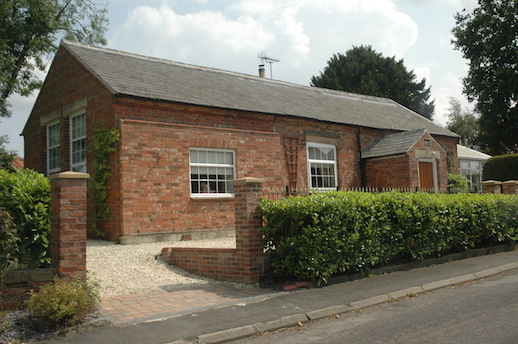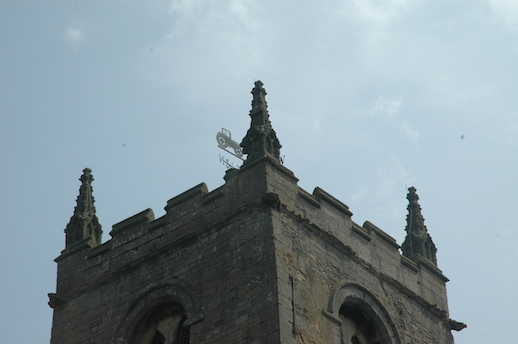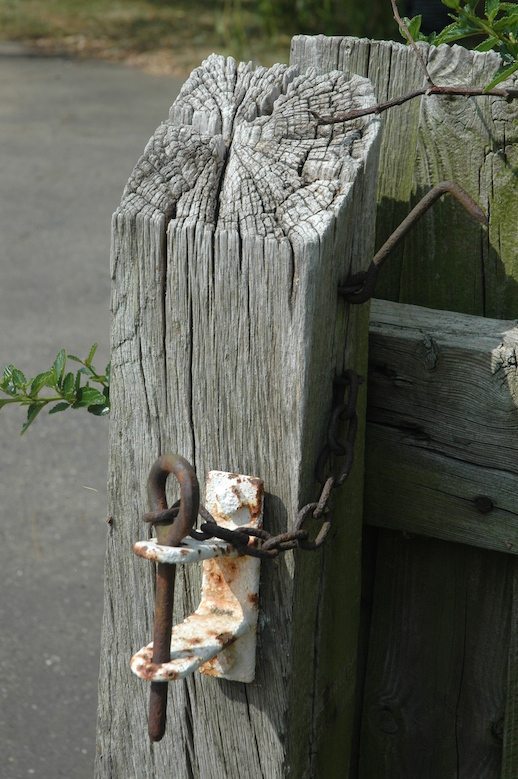Shadows and Reflections: the annual collection of postings where Caught by the River’s ever-reliable contributors and friends old and new take a look back on the events that have shaped the past twelve months. Today it’s the turn of Neil Sentance:
Return to North End
Sweeping back a silvery strand of hair, my mother stooped to listen to my seven-year-old son: ‘Granny, where is the farm?’ My eleven-year-old daughter Evie tried to explain: ‘it’s gone, Noah. It was where these new houses are now.’ It was a hot day in early August, a dust-filled breeze blowing off the prairies next to the main road, the A1, rumbling like an ocean roller a mile or so across the fields…
It had been ten years since I was last here, in the village on the Lincolnshire–Nottinghamshire border where my mother’s family had farmed for seventy years, and where I spent the long holidays of my young years, rambling over its fields, biking the lanes, fishing at the Witham ford. We parked on Newark Hill and tramped down the green lane, past the tumbledown cottage where the village midwife had lived in my mother’s time, and towards the parish hall where my parents had met at a dance in 1965, and had later held their wedding reception, all polyester and rayon, Bass ales and Babycham. We walked along Church Street and the children noticed the old school, date-marked 1847, at first sight very like their own Victorian country school back home in Dorset. This one though had been closed for thirty years. The bell in the mini-campanile was silent. Ghost impressions of the marking-out of ball games were still visible on the gable walls. A neat laurel hedge obscured the railings. My mother stopped by the lane end, recalling a whitewashed cottage where the Hayes boys had lived; brought up on goats’ milk they’d been the ruddiest, roundest kids in the school. The cottage had been replaced by new houses, risibly ornate with baroque gates that no doubt opened electronically. Neighbourhood Watch signs were stuck on front windows; alarm boxes hung above heavy-duty doors.
The church loomed beyond, St Peters, solid Norman-towered, though framed now by scaffolding and warnings of falling masonry. Apparently some of its lead roof had been thieved in recent times, and winter gales had lifted some more; the stonework was spalled and weather-defaced, the ancient windows smearily opaque. It all looked unloved and unregarded. The weathervane is distinctive, in the form of an old-time tractor, speaking to the village’s agricultural heritage – around the time I was christened here in 1970 there were six farms within the parish boundary; today there are none. We searched for names of tractor-drivers and farmers we knew, along with family headstones, among the battered, lichenous monuments of the graveyard. Grandad’s simple stone was snarled with brambles. We cleared them away, revealing again his engraved name and dates, and those of his two infant sons. With silent contemplation we walked back down the path.
We rounded the corner onto Long Street, past the gentrified sites of the long-gone Black Boy and Black Horse pubs. The former Browns bakehouse, a village store full of sweet jars when I was a child, was now also a blank-faced house. The sad diminuendo continued as we went down the street: ostentatious barn conversions and gated communities, topped by a gobsmacking ‘neo-Georgian’ pile, monstrous and fort-like on a low ridge overlooking Fulbeck Heath. Goosegate Farmhouse, where Grandad was born in 1923, was still there, but the orchard where Mum had played and read as a child had been built over to form a gravel driveway, on which stood multiple expensive cars. Further along was Scrimshaw’s barn, rickety and unpretentious, with its steep-pitched rust-tarnished corrugated roof, an authentic edifice amid the neighbouring restorations and the gaudy new.
It was clear it wasn’t the village we remembered. How could it be? The social and economic changes of the last thirty years were written on its once friendly face. The village was no longer a locus of hard land-working, of craft and natural industry, or a pastoral idyll, or a childhood playground, or any of the other things such places may or may not have been. I’m sure the new villagers enjoy living in this hushed dormitory with good communication links to the towns north and south. But in the middle of the day, there was almost no one about to ask.
As we reached North End, there was a gritty yellow wind coming off the wheatfields. Mum and I found ourselves with watery eyes. Grandad’s farm had stood here, at the village edge. I felt like the narrator in Robert Frost’s poem ‘On the Sale of My Farm’, come back again in the ‘grey disguise of years, seeking ache of memory here’. In front of the 1950s farmhouse, stood billowing willows, green chandeliers of cursive branches, much grown since my time here and pulsing with on-the-go bees and full-colour ichneumons – the kids immediately went to sit in the shade of the trees’ feather-veined leaves. A massive combine harvester thundered by, wheels trampling the verges. The monocrop fields were otherwise silent, the hedgerows threadbare. There were no animals – only a portly cat, sat under a car, and some sober crows, keeping their distance. Of the old farmyard virtually nothing remained, the whole site now a dead-eyed housing estate. The only relic was the clasp to the old five-barred farm gate: a humble vestige, it took on a talismanic significance. My wife took a photo and my mother made a sketch in my notebook. How often had we climbed that white gate, sat on its top and surveyed the world, stretched our ‘orming’ limbs over it as it swung, until it clanged and juddered into that very sneck?
The kids had had enough. I went back for the car, and then we all drove down to the ford over the Witham. A fighter jet, from Waddington or Cranwell, roared overhead. We remembered the story that round the bend of the river here a Lancaster bomber had come down in 1943. Heading for Normanton aerodrome, the pilot had made a fatal misjudgement, maybe mistaking the silvery thread of the river waters for a landing strip: the plane crashed into the river, all aboard were killed and now lie in Long Bennington churchyard. We stood on the iron bridge over the flowing waters below. The adjacent field, where my great-grandfather had been killed by a marauding bull, was full of sugar beet. The riverbanks were a seedy jungle of ragwort, rosebay willow herb and the white-flowering trumpets of greater bindweed. It was long since time to leave.
Neil Sentance on Caught by the River.
——————————————————————————————————————————–
Neil’s first book, Water and Sky: Voices From The Riverside was published by Caught by the River / Little Toller in May.



